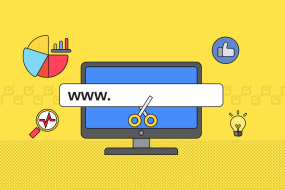
Software as a Service (SaaS)-based web applications are currently the foundation of global businesses. SaaS solutions are essential tools in nearly every industry, from finance and banking to healthcare and education, as they have revolutionized the way they operate and provide services.
The majority of startup CTOs know a lot about the process of MVP development and how to build highly functional SaaS businesses, but because they aren’t experts in cyber security, they need to learn more about how to protect the web application that supports those businesses.
If you are a CTO at a SaaS startup, you probably already know that even though you are small, you are still vulnerable. A startup’s size does not protect it from cyberattacks because hackers constantly search the internet for vulnerabilities they can exploit. Additionally, a single flaw could allow your customer data to be accessed online. A startup’s reputation is built over a long period, and one flaw can ruin it overnight.
Web application attacks account for 26% of all breaches, according to Verizon research, and app security is a concern for 34% of businesses. These attacks are always encountered by the best web application testing companies. This serves as a useful reminder that web application security cannot be ignored if you want to safeguard customer data.
Security misconfiguration
Unpatched flaws, expired pages, unprotected files or directories, out-of-date software, and software running in debug mode are all examples of vulnerabilities.
Broken authentication
This is the umbrella term for vulnerabilities in session management and credential management, in which attackers use stolen login credentials or hijacked session IDs to gain access to user accounts and use their permissions to take advantage of vulnerabilities in web apps.
Path traversal
These enable attackers to read files on a system, allowing them to read source code, secure system files, and credentials stored in configuration files. They can even lead to the execution of code remotely. The consequences can range from the execution of malware to the attacker gaining complete control of a compromised computer.
XSS (cross-site scripting)
Hackers can use this area to target users of the application and enable them to carry out attacks like installing trojans and keyloggers, taking control of user accounts, phishing campaigns, and identity theft, particularly when combined with social engineering.
SQL injection
Where attackers use vulnerabilities to execute malicious code in your database, potentially stealing or dumping all of your data and backdooring the server to access everything else on your internal systems.
Web security testing for applications is typically parted into two sorts – weakness filtering and infiltration testing:
Automated tests called vulnerability scanners are used to find flaws in your web applications and the systems that underlie them. They’re intended to reveal a scope of shortcomings in your applications – and are valuable since you can run them at whatever point you need, as a well-being system behind the continuous changes you need to make in application improvement.
Entrance testing: Because they are essentially controlled hacking, these manual security tests are more rigorous. We recommend running them concurrently with scanning for more important applications, particularly those undergoing significant changes.
A login page can conceal a significant portion of your attack surface. Verified web application examination assists you with finding weaknesses that exist behind these login pages. While automated attacks on your external systems are very likely to have an impact on you at some point, a more targeted attack can use credentials.
You run the risk of being seen if your app lets anyone on the internet sign up. Additionally, authenticated users typically have access to more robust and sensitive functionality, making it more likely that a vulnerability discovered in an authenticated component of an application will have a greater impact.






